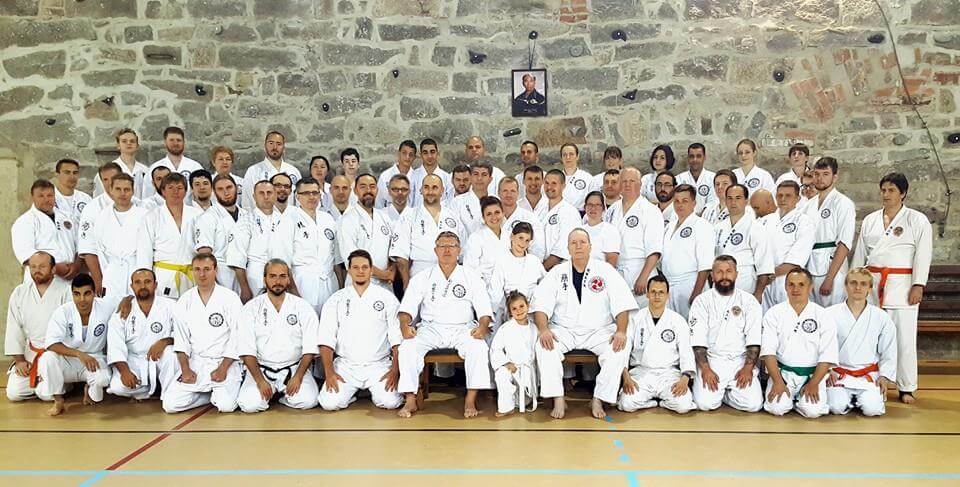The internet is full of discussion groups and blogs discussing the validity and value of kata as well as the true meaning and origins. All are speculative at best and no one can give the correct answer. Some seek to understand kata by incorporating concepts, ideas and techniques from other martial arts and others keep a narrow view with the simplistic, “block”, “punch” and “kick” mentality. Case in point is Tuite; many seek to borrow techniques from grappling arts, such as Jujitsu or Aikido and incorporate them into their kata as the interpretation.
Looking in other places to better understand what we are studying is not bad in itself; however, the real meaning of the technique may be overlooked by not researching what is in front of our eyes. The many concepts and principles that Taika has shown us often turn out to be very simple body mechanics and contained within the transition of kata
movement.
Taika often relays to us the lessons he learned from Wakinaguri that were in the form of a puzzle or question where the idea presented itself in a simple fashion making the principle natural and easy to perform. We’ve heard Taika explain how he was questioned about kicking and thought, like most of us, that chambering the leg to fire off a powerful kick was the correct answer; however, Wakinaguri simple said, “Don’t you know how to walk?”
As Taika thought about this, he realized that the act of stepping places the rear foot in a position where the leg is already cocked and ready to kick. It was a much faster way of kicking and one that the opponent couldn’t readily see. It’s these simple lessons that are overlooked and that cannot be found by borrowing techniques from other sources.
Other examples of this simple wisdom are bending the wrist as if using a hammer to execute a punch or to bend the
knees to get more reach. If we look carefully at the concepts that Taika has taught over the years we can see how
simple changes in angles, cover punch combinations and even turning the head can have a tremendous impact on the
outcome of the technique.
While there is nothing inherently wrong with looking at other sources to better understand our kata and technique, it’s not the way to keep our art pure. We must look at ourselves, studying the natural movements and even limitations of the human body. The truth lies in the kata, but we must free ourselves to better understand what we seek. The old
cliché, “you can’t see the forest for the trees” is how most of look at the kata. We look at gross motions and try to
imitate them without understanding the basic principles. We have to contemplate the tree while realizing it is part of forest. We should study the kata as a whole, but realize that even the smallest part may be the most important.
Bringing techniques from other forms of martial arts may make sense for building an arsenal of techniques; but, we
must be careful to not change the art we are trying to understand. I encourage everyone to research to better
understand, but to be careful not change what we have been taught.


